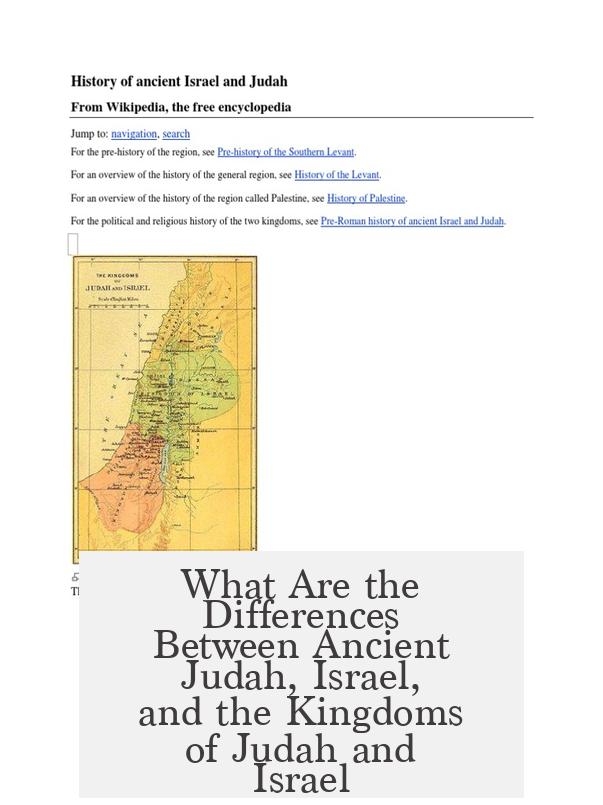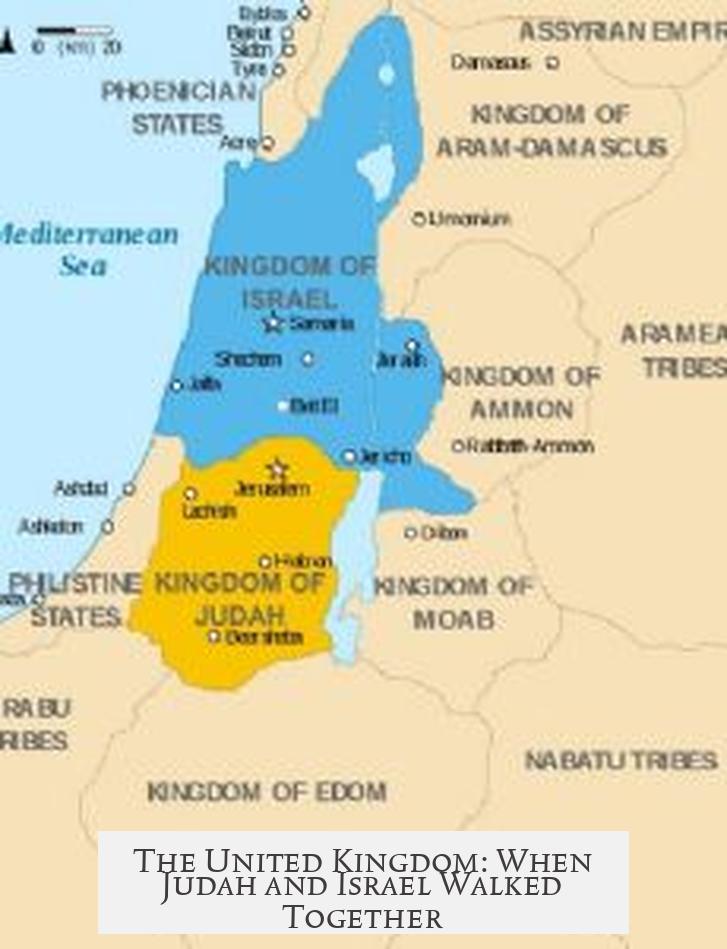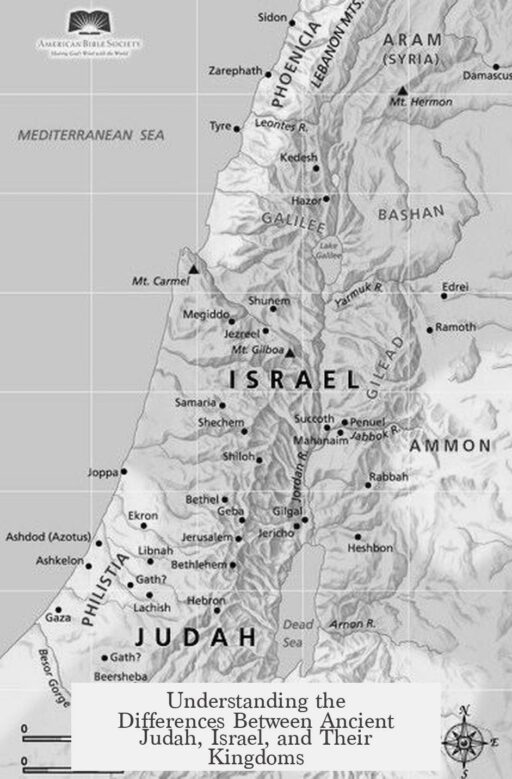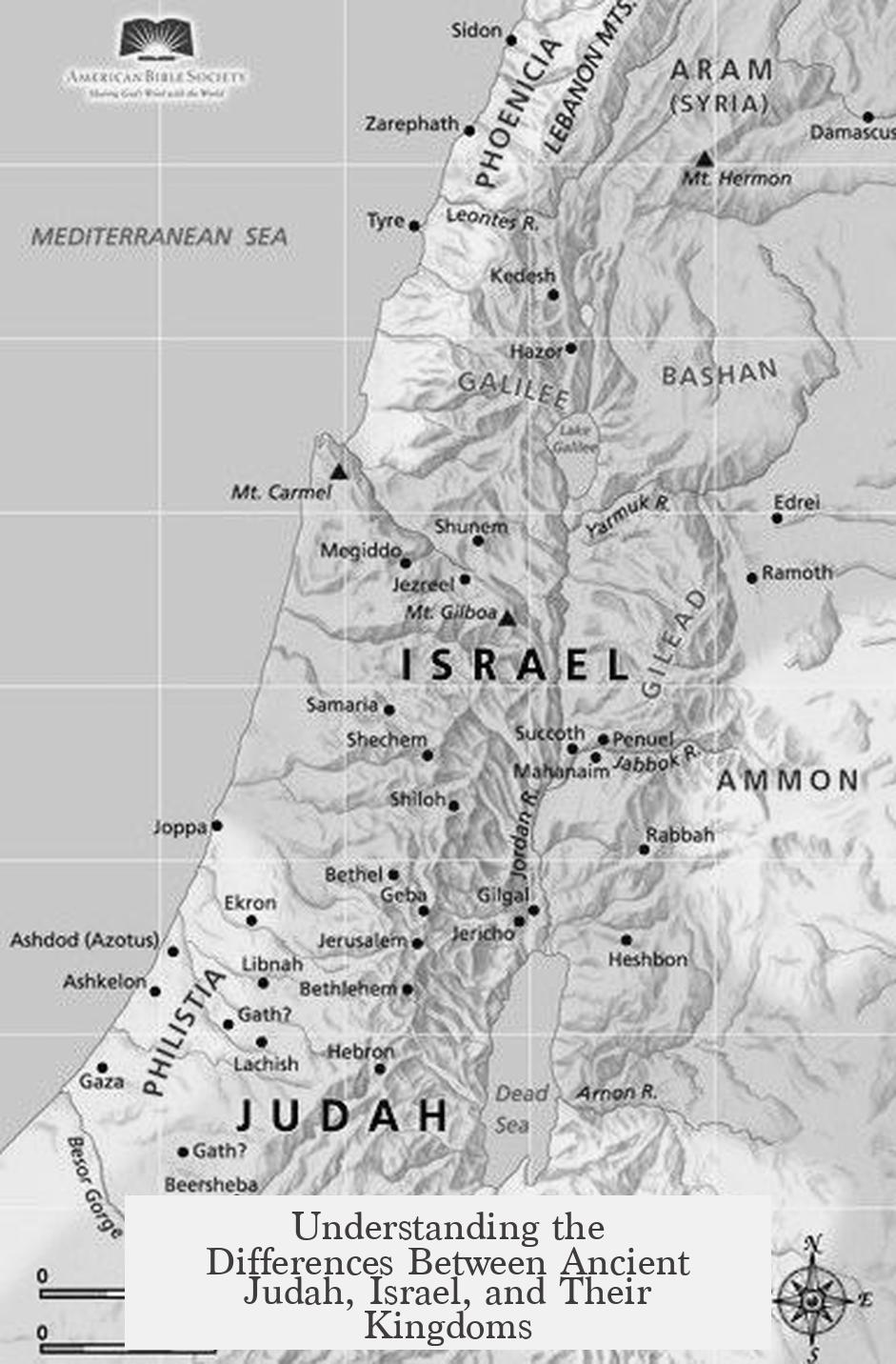The primary differences between ancient Judah, Israel as a people, and the kingdoms of Judah and Israel lie in their identities, geographical locations, political statuses, and historical developments.
Judah originally refers to one of the twelve Hebrew tribes named after Judah, a son of Israel (Jacob). This tribe was situated in the southern portion of the land now called Israel. Over time, especially during King David’s reign, Judah expanded politically by allying with neighboring tribes, forming a southern political entity known as Judah. After the united monarchy of David and Solomon split, Judah became its own kingdom in the south, maintaining the Davidic lineage believed crucial for future religious fulfillment.
By contrast, Israel initially means all twelve tribes of the Hebrews, descendants of the patriarch Jacob, who was also called Israel. This term encompassed the entire Hebrew people. Politically, however, the name Israel came to represent a northern tribal confederation or kingdom consisting of roughly ten tribes located north of Judah’s territory.
During the reigns of David and Solomon, the twelve tribes were united as a single political entity called the United Kingdom of Israel. David, originally from Judah, succeeded in gathering the tribes into one kingdom recognized by neighboring nations. Solomon continued this unity, but his later rule saw significant religious and political decline, with idolatry and foreign influence weakening the kingdom’s cohesion.
Following Solomon’s death, the kingdom split into two distinct entities:
- The Kingdom of Judah: Located in the south, comprising Judah and some allied tribes. It preserved the Davidic royal line.
- The Kingdom of Israel: Positioned in the north, consisting of ten tribes that rejected Solomon’s son as king.
This division marked a profound political and cultural rift. Judah became increasingly independent and was no longer viewed merely as a tribe but as a kingdom equal in status to Israel. The northern Kingdom of Israel later fell to the Assyrian empire, leading to the exile of many inhabitants and the phenomenon called the “lost tribes of Israel.” Judah survived longer but eventually was conquered by Babylon, leading to exile there.
| Aspect | Ancient Judah | Israel (People and Kingdom) | United Kingdom | Post-Solomon Divided Kingdoms |
|---|---|---|---|---|
| Identity | One of 12 Hebrew tribes; named after Judah (son of Jacob) | Name for all 12 tribes collectively; later also northern confederation | Unified 12 tribes under one monarchy | Two kingdoms: Judah (south), Israel (north) |
| Geography | Southern region of the land | Northern and entire land; northern territory for the kingdom | Entire land of Israel combined | Judah in south; Israel (10 tribes) in north |
| Political Status | Tribal group and later southern kingdom | Tribal confederation; later northern kingdom | Single united monarchy | Separate kingdoms with own kings |
| Historical Outcome | Survived longer until Babylonian exile | Conquered by Assyria; tribes dispersed (“lost tribes”) | Unity lasted under David and Solomon only | Division led to conquest and dispersion |
The northern Kingdom of Israel ceased to exist around the 8th century BCE after the Assyrian conquest. Its population suffered deportations, and the traditional tribal identities largely disappeared. Judah, however, continued as a kingdom centered in Jerusalem, preserving religious traditions and the Davidic monarchy until the Babylonian exile in the 6th century BCE. This separation shaped later Jewish history and theology.
Overall, the term “Judah” refers narrowly to a single tribe and later a southern kingdom, while “Israel” initially signifies the entire Hebrew people and later the northern kingdom formed after the united monarchy’s breakdown. The split reflects both political fragmentation and differing destinies for these groups in antiquity.
- Judah: originally a southern tribe; became a southern kingdom preserving Davidic lineage.
- Israel: overall Hebrew people; later a northern tribal confederation and kingdom.
- United Kingdom: combined all tribes under David and Solomon’s rule.
- After Solomon, Israel split into two kingdoms—Judah (south), Israel (north).
- Israel (north) fell to Assyria; Judah (south) endured until Babylonian exile.
What Are the Differences Between Ancient Judah, Israel, and the Kingdoms of Judah and Israel?

At first glance, the terms Judah, Israel, and the kingdoms of Judah and Israel might seem interchangeable, but that couldn’t be further from the truth. Each has a distinct meaning, identity, and history that shaped the ancient Hebrew people and their lands. Let’s unravel this intricate story step-by-step and explore what makes them uniquely fascinating.
Judah: More Than Just a Tribe
Judah begins as one of the twelve Hebrew tribes. Picture the toddlers of a big family, each named after one of Jacob’s sons. Judah is that one kid with an adventurous southern corner of what we now call modern Israel.
But Judah quickly grows beyond just a tribe. By King David’s time, Judah isn’t alone anymore; it teams up with several adjacent tribes. This coalition forms a political entity called Judah—kind of like that neighborhood alliance to tackle a local issue.
This group is based in the south and is significant historically because it preserved the Davidic line, which Christians later identify as key for the coming of Christ. So, Judah isn’t just a tribe anymore; it becomes a kingdom safeguarding a sacred legacy.
Fast forward to the divided kingdom period after Solomon’s death. The northern tribes split off, and Judah remains in the south, continuing its political and cultural identity. Here, Judah sheds its image as just a tribal subdivision and gains status as an equal kingdom alongside Israel.
Israel: A People, a Place, and a Political Power
Now, “Israel” is a bit of an all-in-one word. It refers firstly to the entire Hebrew people, descended from Jacob—who’s also known as Israel. When God liberated the children of Israel from Egypt, that was essentially all twelve tribes collectively moving as one clan under one spiritual and cultural banner.
But Israel also becomes shorthand for the northern ten tribes who, after the kingdom split, form their own tribal confederation and kingdom in the north. These folks have a different geographical and political landscape than Judah.
In other words, while Judah holds down the southern fort, Israel is the umbrella term for the northern coalition. Both are tribal kingdoms but politically distinct.
The northern kingdom of Israel had its tribes spread across roughly the top two-thirds of the territory we know today as Israel. After the split, Israel’s political identity stands apart from Judah’s southern kingdom.
The United Kingdom: When Judah and Israel Walked Together

What about the united kingdom? At its peak, under kings David and Solomon, Judah and Israel are essentially one political powerhouse. David starts off as a leader from the tribe of Judah but gradually pulls all the tribes together, assembling a united kingdom often called Israel.
This golden era is when the kingdom flourishes, and Israel is recognized internationally by neighboring states. Picture it as a team finally rallying together and gaining respect on the big stage.
However, this unity is short-lived. After Solomon’s death, the cracks appear. Influenced by foreign cultures, the people turn from their traditional faith to idolatry—a move that, according to biblical texts, seals their political fate.
God, in this narrative, foretells the kingdom’s division: the tribe of Judah stays intact to preserve the Davidic bloodline, while the rest of Israel fractures and eventually succumbs to external conquest.
Why the Split Matters: Judah vs. Israel
After Solomon, the kingdom fractures into two: Judah in the south and Israel in the north. Both become independent kingdoms, waging battles and political struggles, not just with outside empires but with each other.
Judah survives for a notably longer period, retaining its capital at Jerusalem and preserving much of its heritage. Israel, on the other hand, faces the brutal conquest of Assyria, leading to the exile and loss of its ten tribes — earning the eerie title “The Lost Tribes of Israel.”
Meanwhile, Judah eventually also falls, conquered by Babylon; its people are exiled but, critically, retain a clearer sense of identity thanks to this longer endurance and historical continuity.
A Quick Historical Timeline: Breaking It Down
| Period | Event | Key Details |
|---|---|---|
| Early Era | Judah as a Tribe | One of 12 Hebrew tribes located in the south, named after Jacob’s son Judah. |
| King David’s time | Formation of Judah political entity | Several tribes allied with Judah, forming a southern political unit known as Judah. |
| United Kingdom | Reign of David and Solomon | All tribes united into one kingdom called Israel, recognized internationally. |
| After Solomon’s death | Split into two kingdoms | Kingdom divides into Judah (south) and Israel (north); political and familial rifts deepen. |
| Later Era | Conquests and Exiles | Israel conquered by Assyria, losing ten tribes; Judah conquered later by Babylon, leading to exile. |
Why This All Still Matters Today

The terms Judah and Israel aren’t just ancient labels stuck in dusty history books — they shape much of religious understanding and culture even now. For example, Judah’s survival just long enough to preserve the Davidic line is central to Messianic prophecies in Judeo-Christian traditions.
Meanwhile, the mysterious fate of Israel’s ten lost tribes fascinates historians, religious scholars, and curious minds alike. Where did these people go? Did they assimilate? The questions remain open, fueling decades of research and spiritual reflection.
Understanding these distinctions also helps explain modern regional and cultural identities in the area that encompasses today’s Israel and neighboring lands.
So, How Do These Pieces Fit Together?
Here’s a quick, easy takeaway:
- Judah started as one of twelve tribes, became a political kingdom in the south, and preserved a royal line linked to David.
- Israel was both the entire people of the twelve tribes and specifically the northern kingdom formed by ten tribes after the split.
- The United Kingdom under David and Solomon united all tribes into one political state called Israel.
- After Solomon’s death, the kingdom split into two: north (Israel) and south (Judah), with different fates for each.
The story of Judah and Israel is one of family, politics, faith, conquest, and survival. It reminds us how history often shapes identity—sometimes in ways just waiting to be rediscovered.
Final Thought: What Can We Learn from This?
When navigating history, clarity is vital. Labeling these terms interchangeably can cause confusion. Recognizing Judah as a tribe and kingdom in the south, Israel as both a people and a kingdom in the north, and the united kingdom as their brief political union helps us grasp the bigger historical narrative.
So, when you hear “Judah” or “Israel” in a historical or religious context, pause for a second and consider: Are we talking family, kingdom, tribe, or entire people? This distinction, subtle but critical, opens a door to appreciating one of the most compelling chapters in ancient history.
Ready to dive deeper into this story? Explore the fascinating tales of kings, prophets, and empires that colored the fates of Judah and Israel. The past is calling!




